Genre: Sports Developer: Krisalis Publisher: Virgin Games Players: 1-2 Released: 1992
Let’s face it, Europeans simply love soccer! In most European countries (except maybe a few of the Nordic ones) “our” football is the team sport number one. So when the Genesis finally started through and was officially brought to the old continent, many a fan of kickball was glancing at the library, looking the best soccer game the new console generation had to offer. However, for the first two years there was only one kid on the block: World Championship Soccer aka World Cup Italia ’90, a game that, at best, can evoke some kind of “so bad it’s almost good” kind of charm – kind of like how Nicholas Cage’s performance in The Wicker Man can become enjoyable only with the right mindset and a huge supply of beer on hand. So when local developers started contributing software for the Mega Drive, it didn’t take long for some of them to address the situation and try to come up with a decent simulation of many a European’s favorite pastime (or at least an arcade-style facsimile thereof). In that regard, European Club Soccer (known as World Trophy Soccer in the U.S.), one of the forerunners of European style football on the platform, can probably be considered the best of the early Genesis-era soccer games. How much is that worth when compared to later outings? Let’s find out.
Like many early Mega Drive games out of Europe, European Club Soccer has its roots in the Atari and Amiga home computer scene. Basically, what British developer Krisalis did was take the engine of its previous 16-bit home computer game Manchester United Europe, slap a few additional teams on, and port it to the Sega console. Now, in its day (1991-92), Manchester United Europe was a pretty decent title, so the pedigree seemed to be adequate. However, since home computer games usually only found a decent market in Europe, Krisalis and publisher Virgin tried to go all-out with this game. First, European Club Soccer sports a whopping 172 club teams from 32 European countries, from A as in Albania to Y as in Yugoslavia. Some of the clubs even contain the names of their more famous players, which should appeal to the hardcore soccer fans knowledgeable of the football landscape during the ’91/’92 season. But the creators did not only aim for the European market. When the game was brought to the U.S., it was re-branded World Trophy Soccer. At its core both games are virtually identical; the differences are minuscule – heck, even the logos of both games almost look exactly the same.
Here’s a complete breakdown of differences between the two games: The selection of playable clubs has been reduced to 37 national teams out of five continents. Since there are now other teams, player names have also been switched out. The main menu looks slightly different, almost to a curious degree, in fact. While World Trophy Soccer has the options tournament, exhibition, options, and uniform design, the very same menu in European Club Soccer displays simulation, arcade, options, and strip design instead. However you name it though, they are effectively the same: There’s an options menu for – among other things – difficulty and length of the matches. You can also swap out the jersey designs of each and every team to your own liking, and you can start right for a quick single match or enter tournament mode – though due to the reduced number of teams, the tournament mode in World Trophy Soccer is one round shorter than the one in European club Soccer. And that’s all the differences there are. It’s really just the same game with a new overcoat and a very light one at that. To top it all off, there is even a third version of the game. For the Japanese market the game was re-branded yet again, this time sporting an official pro license and called J. League Championship Soccer (not to be confused with SEGA’s own J. League Pro Striker), with the number of teams reduced to the 10 clubs from the 1993 inaugural season of Japan’s J. League and the tournament mode replaced with a ten-team league. This latter version has a slight tweak when it comes to the controls; however, more on that later. Gameplay, graphics and sounds are exactly the same in all three versions (with the aforementioned small difference in the Japanese port). If a player gets skilled in one iteration of the game, he’ll have no problems at all with the other two as well. Too bad that all three versions also share a glaring, common flaw: two players can only compete against each other. Two players in the same team is not an option. The soccer simulation kind of dropped the ball here, so to speak.
Before the start of each match, players can choose in which formation they want to compete in. After confirming the selection you are then greeted to a small animation in which the teams enter the pitch, complete with a roll call of every member. Afterwards the referee brings the ball into the stadium and the match can start. It’s a nice little sequence, but if you’ve already seen it, you can simply press a button and jump right to the kickoff.
The gameplay forgoes simulation and is more arcade-oriented, and it tries to be fast and uncomplicated. There’s no off-sides, though there are fouls, and if a player gets booked twice, he has to leave the pitch. Whenever a penalty, a throw-in or a corner kick are granted. You can aim the ball with a little cross-hair, though your teammates constantly keep moving about, so managing a controlled pass that way is a bit of a challenge. This goes for the game in general, by the way. Passing isn’t really an exact science, so most of the time you are better off blindly kicking the ball forward towards opponents’ goal rather than trying to skillfully outmaneuver them with precise passes. It can also become a bit of a gamble when a player decides to run with a ball, or whether he starts off without it instead. More often than not, passes also get blocked by your own mark or the AI-controlled recipient’s back, so that can be a bit irritating as well. Speaking of AI, regardless of difficulty setting, it can sometimes be quite dumb. For example, even if it has managed to outmaneuver the goalie, it may happen that instead of shooting into the unguarded goal it runs straight for the corner to make another pass or the player gets stuck at the goal post without scoring.
Controls are simple enough. The B button is for low shots/passes and for sliding tackles, the C button serves for high shots/passes and trying to stop the ball. When in defense, the player nearest to the ball gets selected automatically, which works pretty well, though you can turn that switch to manual control in the options if you want to. The goalie is always controlled by the computer AI, which usually works out well enough, though it can turn into a bit of a guessing game whether your goalkeeper decides to throw or kick the ball after a successful parade. What the A button does depends on which version of the game you play. In World Trophy/European Club Soccer, it is used for substitutions: Press A and then select one out of four names on display, and the currently active player gets swapped out after the next break. This can be a bit confusing at first when you accidentally press A and then wonder why your players won’t react to any other button presses anymore. If you’ve decided to turn on manually selecting the nearest player to the ball, substitutions will be turned off and the A button now will be used for that. In the Japanese edition, this option is set by default, by the way. This all doesn’t affect the overall gameplay very much. For an arcade-style soccer game though, the PAL version (European Club Soccer) is a tad slow; the ball doesn’t quite move with the speed one might expect, particularly when compared to the AI controlled other players on the field. This is remedied a bit in the NTSC version World Trophy Soccer. The controls feel a bit sluggish in both versions, however.
The downsides in control are offset a bit by the music. It is upbeat, pretty catchy, and underscores the game with a nice tempo. Each track is quite enjoyable to listen to for a while. They may get a bit repetitive eventually, especially if the match lasts longer than four minutes a half-time (the lowest time setting available). Nevertheless, the music, created by none other than Matt Furniss, definitely marks one of the high points of the game. As for the graphics, they are okay: A bit on the grainy side, and the player sprites could maybe be a bit bigger, but they do their job well, certainly better than earlier soccer games on the Genesis.
Overall, the game leaves a lot to be desired. With a better game flow, slightly improved speed, tighter controls, and a cooperative two-player-mode; this game could certainly have left its mark. Since the NTSC edition has a higher frame rate with a noticeable faster speed, that one may be the more enjoyable of the two, even if it only sports less than a fifth of the original European game’s roster. Either way though, this game is decent, with the soundtrack saving it from mere mediocrity. Compared to other soccer game that were available for the Genesis around the time – World Championship Soccer, Tecmo Soccer, Super Kick-Off, or Ultimate Soccer come to mind – this game definitely was the best soccer game the Genesis/Mega Drive had to offer by 1992, whether you’d like to call it European Club, World Trophy or J. League Championship Soccer. Given the competition though, that wasn’t all too hard to achieve.
SCORE: 5 out of 10

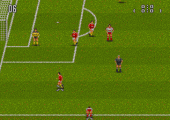
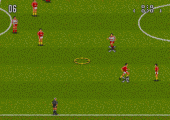
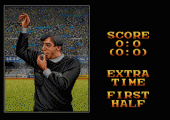
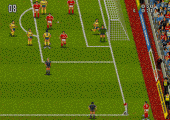
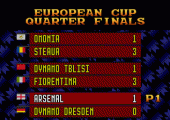
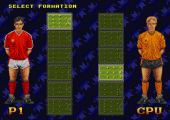
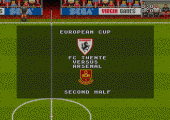
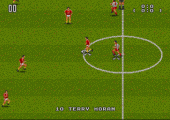
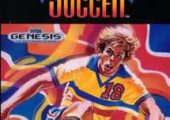
Recent Comments